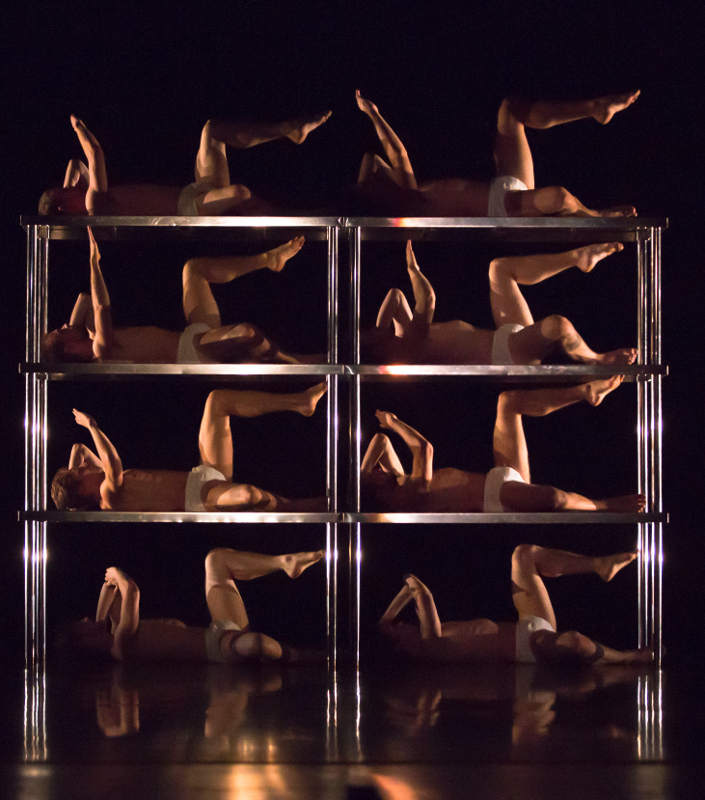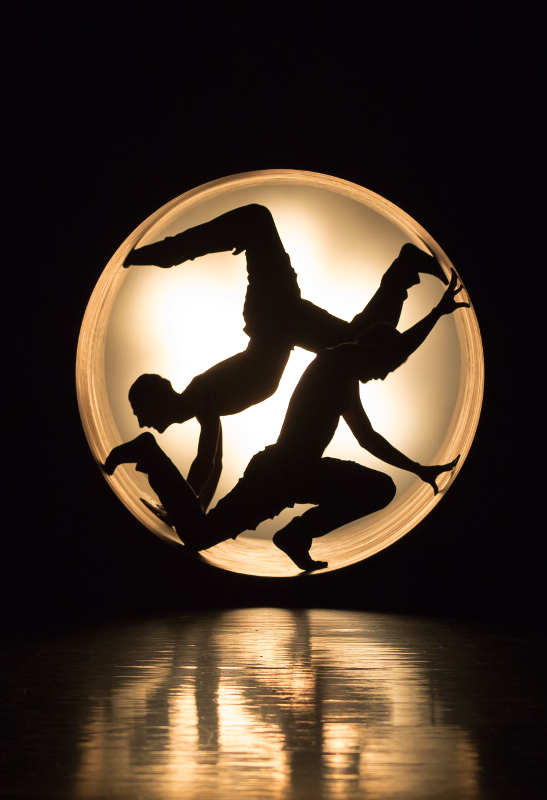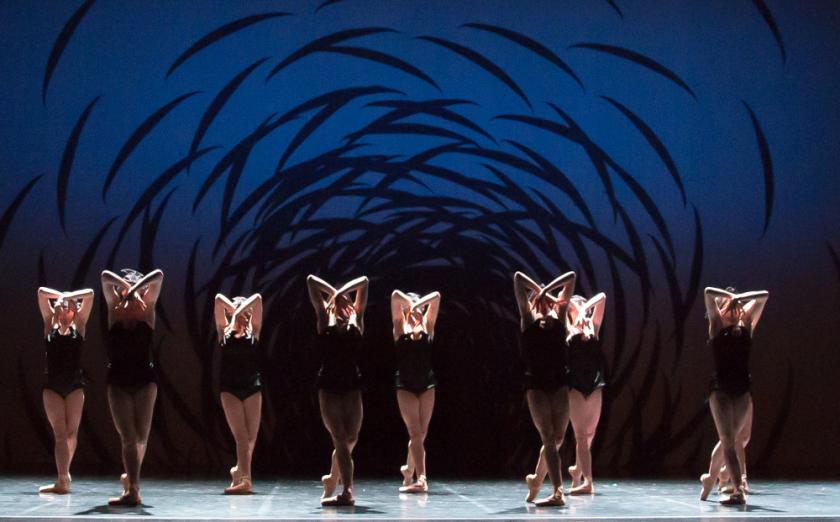Years ago, MC14/22 (Ceci est mon corps), the Angelin Preljoçaj piece with which this Scottish Ballet double bill opens, made a deep impression on Christopher Hampson. So deep that, once he became Artistic Director of Scottish, he actively sought it out for the company, pulling it out of unperformed obscurity to the surprise even of the choreographer, and using an Edinburgh Festival platform to stage a piece that would have been commercially unviable in the normal order of things. Admirable, you might say: artistic conviction fighting back against the creeping infiltration of the utile. Bravo Hampson!
But, having seen the piece, you might equally say – in the immortal words of Steps c.1999 – that some things are better best forgotten. MC14, as it is usually abbreviated, is a 55-minute "retelling" of the Gospel of Mark featuring 12 topless male dancers, six stainless steel tables, one bowl of water, some unidentified black stuff (soot?), and a lavishly used roll of parcel tape. It is, to put it generously, challenging to watch, and – with a "score" of clanking and wailing noises mostly borrowed from the sound studio of a cheap sci-fi movie – a trial to listen to as well.
 The first time I saw it, at this bill's Edinburgh Festival outing in 2016, I fought earnestly to follow the eucharistic allegory: this chest beating is like the non sum dignus, that table-wiping gesture a garbled reference to the actions of conscrecation; this tableau recalls Da Vinci's Last Supper, that scene with open mouths the distribution of hosts. Second time round, and watching from a higher vantage point in the first circle, I noticed an alternative or parallel interpretation of the movement as being an essay on what bodies – dancers' bodies – do. Ceci est mon corps, and my body sleeps (pictured right), drinks, washes, caresses, gets massaged and prodded (on the tables), has sex, fights, sings, eats, hurts and is hurt. Attempts to hobble or shut down the body – the two memorable scenes where one dancer is wrapped in crippling parcel tape and another's song is interrupted by violent assault – don't work: its drive to move and to express is too strong.
The first time I saw it, at this bill's Edinburgh Festival outing in 2016, I fought earnestly to follow the eucharistic allegory: this chest beating is like the non sum dignus, that table-wiping gesture a garbled reference to the actions of conscrecation; this tableau recalls Da Vinci's Last Supper, that scene with open mouths the distribution of hosts. Second time round, and watching from a higher vantage point in the first circle, I noticed an alternative or parallel interpretation of the movement as being an essay on what bodies – dancers' bodies – do. Ceci est mon corps, and my body sleeps (pictured right), drinks, washes, caresses, gets massaged and prodded (on the tables), has sex, fights, sings, eats, hurts and is hurt. Attempts to hobble or shut down the body – the two memorable scenes where one dancer is wrapped in crippling parcel tape and another's song is interrupted by violent assault – don't work: its drive to move and to express is too strong.
The dancers of Scottish Ballet are strong, and beautiful too in the warm, low light, but they perform the piece commendably, rather than dangerously; instead of the simmering intensity which might help to beguile 55 long minutes we see 12 polished, professional, and preternaturally-composed young men. It is a composure some in the audience might envy, for MC14 can provoke reactions of wild resesentment – the first time I saw it, there were audible walkouts; this time, ranting voices aplenty at the interval. For the record, I loathed it passionately on the first viewing, but found myself oddly hypnotised on the second.
 After Crystal Pite's reign of triumph on London stages in the last few years – capped by her excellent Flight Pattern for the Royal Ballet in March – there were high expectations for the spiky, bee-inspired Emergence (pictured left, and main picture). A 2009 piece for the National Ballet of Canada, it's a smart pick for Scottish: visually striking, very memorable, and made for a classical company so they get to use their pointe shoes. Pite's talent for spine-tingling and original choreography is in evidence throughout, particularly in her speciality, group formations: the uncanny insectoid stalking of the female dancers on pointe is a movement of genius; so too is their entrance in a quivering, not-quite unison that brilliantly evokes the way bees hover.
After Crystal Pite's reign of triumph on London stages in the last few years – capped by her excellent Flight Pattern for the Royal Ballet in March – there were high expectations for the spiky, bee-inspired Emergence (pictured left, and main picture). A 2009 piece for the National Ballet of Canada, it's a smart pick for Scottish: visually striking, very memorable, and made for a classical company so they get to use their pointe shoes. Pite's talent for spine-tingling and original choreography is in evidence throughout, particularly in her speciality, group formations: the uncanny insectoid stalking of the female dancers on pointe is a movement of genius; so too is their entrance in a quivering, not-quite unison that brilliantly evokes the way bees hover.
Nevertheless, I'll buzz against the swarm and say that it could have been better: some of the dancers were visibly challenged by Pite's uncompromisng physical language, and the piece doesn't have quite the same hackle-raising power as her most recent work. The minimalist score makes it no friends either, though the metallic honey-gold of the lighting and the elegant black parabolas of the backcloth are legitimately gorgeous.
A mixed success of a mixed bill, then. See it for the Pite, but prepare – perhaps – to need a stiff drink after the Preljoçaj.
- Scottish Ballet are performing this double bill at Sadler's Wells until 10 June.
- Read more dance articles on theartsdesk














Add comment